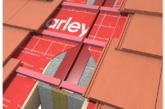Think before you dig is one of the core messages from the UK Power Networks Be Bright, Stay Safe campaign. PHPD’s Lee Jones looks at how the organisation can help you steer clear of contact with cables and electrical infrastructure.
When it comes to a close encounter with the power network there are rarely second chances. The least that could be expected from significant contact with electricity is serious burns, and at worst a fatality. Either outcome will have a devastating effect on a builder’s family, with life-changing injuries seriously impacting on their ability to earn.
Moreover, as an employer, if you are deemed to have failed to implement the appropriate mitigation measures amongst your workforce, it is likely you6 will be deemed legally responsible for any harm to your employees.
The UK Power Network’s Be Bright, Stay Safe Campaign is dedicated to raising the awareness of the dangers of excavation around the underground network, and avoiding contact with overhead cables.
It seeks to engage with everyone from developers to utilities providers to get that message across, and is at pains to emphasise the consequences of cable strikes. Thanks to the invaluable information it provides, however, the organisation can help the building industry avoid those tragic consequences, and represents an invaluable resource for identifying the location of electrical services.
So just what procedures should you be putting in place to make sure you don’t become a casualty? Your employees can be at risk not just when digging but when using lifting equipment, ladders, pneumatic drills or hand and power tools. In every instance the same rules apply – each job should be planned, with extra time allowed to locate and mark out cables.
Before starting work you can request cable plans from either UK Power Networks or Line Search Before You Dig. Every job is money but digging without an awareness of what lies beneath can itself be very costly. Locate, identify, and clearly mark where those cables are and make sure everyone working on site is aware and understands.
Underground utilities may not run in straight lines and can be routed around obstacles – or change depth – so it’s also important to confirm the location of cables by using a Cable Avoidance Tool (CAT). Buried services should be clearly marked before excavating – with trial holes dug if necessary – and, when you’re ready to make the earth move, do not use mechanical excavators or power tools within 0.5m of the suspected route









